Fallout Tactics: Brotherhood of Steel Preview
We visit Interplay and come back with a full report on this anticipated strategy game. Read this preview by Miguel Lopez.
While the long-awaited sequel to 1998's Fallout 2 is little more than a glimmer of hope to countless fans of the series, those hungering for another postapocalyptic romp will have their fix in the near future. Fallout Tactics: Brotherhood of Steel is a squad-based tactical combat game, as the name implies, which is set in the Fallout universe. It also serves as a side story to the series' ongoing continuity. The game will feature many systems native to the series, so heavy RPG influences will seem implicit, which will no doubt please longtime fans.
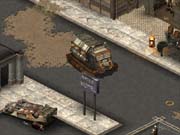
Whereas the two previous Fallout games were set in postapocalyptic California, Fallout Tactics: Brotherhood of Steel is set in the blighted American Midwest, which is home to many unique groups and forces. The game takes place sometime between the first and second games, and the story revolves around The Brotherhood of Steel, a powerful organization with whom fans of the series are no doubt familiar. Briefly, the Brotherhood's goals are to influence the reestablishment of human civilization by directly manipulating the flow of power, as well as technology. Needless to say, in the wasteland that is postnuclear America, the Brotherhood has become a force to be reckoned with. Fallout Tactics: Brotherhood of Steel kicks off after the defeat of The Master - the original Fallout's mutant menace - at the hands of the Vault Dweller. As The Master assembled a formidable horde of mutants with which to assimilate the rest of humanity, The Brotherhood was naturally concerned about the consequences of its subsequent dispersal. The game puts you in the role of one of the Brotherhood's young paladins and leader of a squad sent to track the scattered horde's movements throughout the Midwest. Throughout the course of the game's 22 missions, you'll make tracks through Chicago, Denver, and all the waste in between and investigate the mutant horde's activities and much more - that is, if the convoluted plots of previous games are any indication.
Though the game is undeniably Fallout at its core, you'll find that developer Micro Forte's reinterpretation drastically changes much of its focus. The series' combat system - on which Fallout Tactics: Brotherhood of Steel has logically focused - has remained intact, though a few notable refinements have been affected. Action points, which are central to Fallout's game system, are still dominant, and they dictate how often your characters can do anything, from shooting their weapons and moving across the maps to using stimpacks and altering their stances. Stances play a major role in the game's battles: They affect how likely your characters are to be hit and how effectively they can sneak past enemies. You can choose to have your characters stand, crouch, or crawl, and each change in stance costs one action point. As logic would dictate, characters move more slowly when they're not standing, and speed can have many implications, given the game's potential pace.
Perhaps the most significant change to the combat system is the addition of what Micro Forté calls the "continuous turn-based action system." Though Fallout Tactics: Brotherhood of Steel is a turn-based game in the end, the CTB system allows for the illusion of real-time play, seamlessly segueing every turn into the next. Very much akin to games that use Bioware's Infinity engine, playing Fallout Tactics: Brotherhood of Steel in continuous turn-based mode feels quite "real time" for all intents and purposes. While purists will be able to play the game in a standard turn-based mode, the continuous turn-based action system seems very well suited to online play - an application that Interplay seems ready to wholeheartedly support.
Missions and Multiplay
Fallout Tactics: Brotherhood of Steel will boast a full-featured mission editor, which will let you craft your own scenarios and campaigns, not to mention multiplayer maps. The game's isometric, 2D maps are simply huge - for comparison's sake, each single map exists as a stand-alone locality that's as large as the original Fallout's hub area in size. Areas with varying degrees of elevation will exist in each map, allowing for the strategic placement of snipers and such. If you want to create your own campaigns, you'll find the mission editor well suited to the task; it will allow for all manner of scripted events. Additionally, the missions can be linked together to form a cohesive whole.

The largest multiplayer maps will allow for up to 18 squads to battle it out, with ample room for all types of units and strategies. Various vehicles will be at your disposal, and each will have different characteristics, some of which will feature impressive offensive capabilities. Though there isn't much information on the game types that the game's multiplayer mode will allow for, deathmatch and co-op modes are practically assured. The game will be playable on all manner of online networks and will feature a neat "balancing point" system, which guarantees that all battles will be fairly matched. During multiplayer games, all participants will be forced to use the same combat system to avoid discrepancies pertaining to a player's turn. Also, when you play during the continuous turn-based mode, you won't be able to pause the games - this gives the mode a marked RTS feel, albeit with a much more deliberate pace.
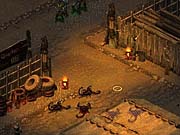
The single-player missions will be arranged in three chapters, and each chapter takes place on its own world map. Completed missions will remain on the world map, and each can be revisited for the purposes of bartering, information gathering, and item acquisition. After the completion of each chapter, though, that area of the world map becomes inaccessible. In between missions, you will be free to roam around the map and engage in random encounters in order to acquire goods, money, and experience. Though we've yet to see the actual world map running, the fact that the game features 22 missions serves as a testament to its potential size. In short, we feel that the gameworld will be every bit as detailed and expansive as those in previous games in the series, complete with interesting areas and a lively, diverse mix of characters inhabiting them.
When not actively completing missions, you will be able to hang around one of the Brotherhood's bunkers, where you can gather info from fellow members, assemble squads, and commission equipment and vehicles. Presumably, in between missions, all the characters that join your cause will rest at the bunkers, where they'll wait to be called on for duty.
Characters
Fallout Tactics: Brotherhood of Steel's single-player game will put you in the role of a member of the titular organization. Throughout the course of your journeys, you'll encounter various types of characters, many of which will join your squad. The final game will feature nine playable character races; here, we'll present seven. Because revealing the last two character types would compromise sensitive aspects of the game's plot, they will remain in the dark.

Character creation is handled in a manner similar to that of previous Fallout games. Since the game's streamlined system features no character classes, it's up to you to choose your character's skill focus by tweaking various attributes, skills, and other characteristics. Each time your character advances in level, you get a whole new set of points to distribute, with special perks becoming available every three levels.
Though your choices are pretty much made for you when it comes to the single-player game, the squads you assemble for multiplayer games can be composed of whatever types of characters you desire. When assembling squads for multiplayer games, you'll have to work within a set number of points. Every aspect of your squad - from your characters' levels, traits, and perks to the weapons they wield and the armor they wear - will be regulated by point values. Thus, you can opt to assemble a relatively small team of powerhouses or a more balanced strike force composed of members of modest ability; so long as it remains within the preset point value, it's all fair. Brief character descriptions follow.

Humans: Humans make up the bulk of the Wasteland's denizens, from the vicious raiders who wreak havoc on lowly settlements to the "civilized" inhabitants of its many towns and cities. The main character in the single-player game will be a human member of the Brotherhood of Steel, an organization focused on acquiring military might and administrating the spread of technology throughout the ravaged world. Humans are a tenacious, versatile race whose members can excel in most areas; soldiers, scientists, and diplomats are not uncommon among their numbers.
Tribals: Tribals are the human members of the savage tribes, and they have proliferated throughout the Wasteland. Though not as technologically advanced as their civilized brethren, the tribals are no less canny than other humans - given time and experience, they can grow in the same ways. Tribals are heartier by nature, though, and are quiet adept at wielding primitive weapons, like spears; and they have been known to make very effective use of natural poisons.
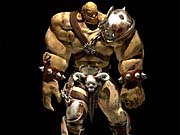
Supermutants: In the wake of the Great War that blighted the land, the nuclear and atomic weapons that were liberally used physiologically altered many of the world's inhabitants. Those lucky enough to have survived found their physical forms drastically altered, for better or worse. Members of the race that would eventually become known as the supermutants count themselves among the most fortunate, as they enjoy enhanced physical strength, not to mention a strangely evolved ethical code. Mutants also serve as a catalyst to the game's plot; it is to reconnoiter the movements of the Master's dispersed mutant horde from the original Fallout that Brotherhood of Steel sends a group of paladins to the Midwest.
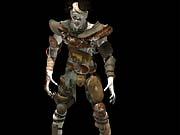
Ghouls: Notably less fortunate than the supermutants are the ghouls. Having had their bodies hideously ravaged by effects of the Great War, ghouls are ruthlessly persecuted by bigot humans who fear and loathe them. But they are heavily resistant to all forms of radiation and are quite adept at all things technical, and this makes them quite indispensable to most balanced squads.
Reavers: The Reavers are a special group of raiders and are natives of the Midwest. Unlike their common, often brutish counterparts, the Reavers are quite savvy when it comes to technology, and they have developed a propensity for purloining high-tech goods. Given their "enlightened" nature, the Reavers are a powerful force in their native area, and it can be assured that they'll pose a threat to the Brotherhood, who'll no doubt attempt to throw their weight around once they come to town.
Deathclaws: The Great War drastically affected a fair number of Earth's creatures, many of them becoming bigger, meaner, and more cunning than their prewar counterparts. The Deathclaws are a great example of this; these huge, swift, and vicious creatures roam the wasteland and make meals out of the majority of beings unfortunate enough to come into contact with them. Though Deathclaws are not inherently intelligent by any stretch, powerful organizations have been known to experiment with them, which eventually resulted in colonies of frighteningly intelligent, capable killers. Fortunately, Deathclaws have proven to develop impressive ethical codes much of the time, which makes these rare creatures indispensable companions.
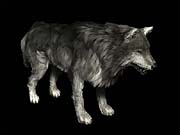
Dogs: Smarter than their prewar kin and many times more loyal, the canines that roam the wastes are particularly prized as fighting companions, and they provide much moral support on top of their powerful bites. Those familiar with the Fallout series will undoubtedly foster fond memories of Dogmeat, the original Vault Dweller's most faithful companion.
Vehicles
One of game's more interesting features is the selection of vehicles for players' squads. A skill new to the series - called "driving" - dictates how effectively a given character can pilot and maneuver a vehicle. As most bipedal characters will have access to this skill, expect to come across characters specializing in it. Though all of the game's vehicles will be inherently deadly (when vehicular homicide is taken into account), some will actually allow squad members to discharge firearms from within their safe confines. What's more, there is at least one vehicle - the tank - that features its own weapon. Firing the tank turret falls under the "heavy weapons" skill. Without further ado, we present the game's vehicles.

Raider buggy
Designed by raiders of questionable mental faculties, this buggy isn't the most dependable vehicle in the Wasteland. It is quick and maneuverable, though, so it definitely serves its purpose.
Seats: One
Armor: Weak. Offers a small amount of protection against bullets and thrown projectiles, but none against armor-piercing and energy weapons.
Max speed: 45mph
Cruising speed: 35mph
Turning radius: 15 ft.
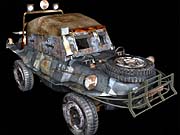
B.O.S. scouter
A Volkswagen Bug in a past life, the Brotherhood's scouter is a light, swift buggy that's ideal for reconnaissance. The buggy holds one man, who rides in a tight cockpit, and it features enough cargo room for his gear.
Seats: One
Armor: Offers good protection against light arms, though it's not particularly effective against armor-piercing or energy weapons.
Max speed: 40mph
Cruising speed: 30mph
Turning radius: 15 ft.

B.O.S. APC (All-Terrain Personnel Carrier)
The APC - an original Brotherhood of Steel design - rides rather slowly on twin tank treads and holds up to eight men, depending on their size. Being a troop-transport is its primary role, so it's rather decently armored. It's a tad on the slow side, however, so it's not very wise to drive it into the thick of combat.
Seats: Eight
Armor: The APC features moderate armor that protects its riders against most conventional weapons. It's also partially effective against energy weapons.
Max speed: 20mph
Cruising speed: 10mph
Turning radius: None
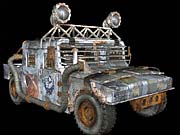
B.O.S. HUMMER
The Brotherhood's HUMMER is based on AMG's original M1025 design, which saw heavy use in the 20th and early 21st centuries. The HUMMER serves as the Brotherhood's primary mode of transportation and features vintage parts scavenged from prewar models.
Seats: Four, though larger squad members and those in bulky armor may take up more room.
Armor: The HUMMER's armor is about equal to that of the Scouter; it'll deflect attacks from light arms, though it won't do much against energy weapons.
Max speed: 35mph
Cruising speed: 25mph
Turning radius: 25 ft.

Tank
Basically a standard-issue, Sherman-esque tank, this vehicle features a 75mm gun, heavy armor plating, and a slow, deliberate pace. Since it's slow, it's prone to being pelted by grenades and such, but it's nothing that its impressive weapon can't compensate for.
Seats: Two (driver and gunner)
Armor: The tank enjoys heavy armor plating, which offers some protection from all forms of attack, including those that issue from energy weapons.
Max speed: 15mph
Cruising speed: 8mph
Turning radius: None
Weapons
A heavily armed squad is a healthy squad, to be sure, and Fallout Tactics: Brotherhood of Steel will give you quite a bit of choice when it comes to outfitting your party. As before, your characters will have skills related to each weapon type, which lets you focus your squad's growth and properly assign them roles suited to them. Melee weapons, firearms, heavy weapons, energy weapons, and grenades of all forms will play key roles in the battles you'll engage in. Here are some of the game's weapons, which are representative of the total 130 you'll find.
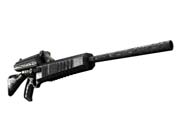
Calico Liberty 100
Part of the Calico line, the Liberty is a powerful, fully automatic rifle with an enormous clip.
Damage: 10-20
Range: 22
Fire mode/action point cost: Single/4 AP, Five-round burst/5 AP
Ammo capacity: 100
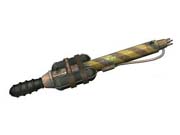
Cattle prod
Developed by Wattz Electronics, the cattle prod uses small energy cells for power. This particular model features a handy "overload" setting.
Damage: 12-20
Range: N/A
Fire mode/action point cost: Swing/3 AP, Overload/3 AP
Ammo capacity: 10
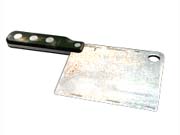
Cleaver
A heavy butcher's cleaver, ideal for chopping cuts of meat from creatures both living and dead.
Damage: 12-18
Range: N/A
Fire mode/action point cost: Swing/3 AP
Ammo capacity: N/A
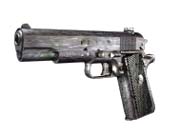
Colt .45
The classic Colt M1911 A1 is easy to use and is accurate, and it features tremendous stopping power.
Damage: 5-11
Range: 22
Fire mode/action point cost: Single/4 AP, Triple/5 AP
Ammo capacity: 12
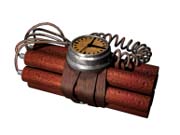
Dynamite
The dynamite you'll encounter in Fallout: Brotherhood of Steel will be composed of nitroglycerin mixed with kiselguhr, an absorbent substance. It features a timer.
Damage: 20-60
Range: N/A
Fire mode/action point cost: Activate/5 AP
Ammo capacity: N/A
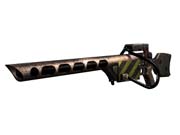
Laser rifle
Another of Wattz 2000's fine products, this laser rifle uses microfusion cells for more powerful beams, as well as a lengthened barrel for increased range.
Damage: 23-50
Range: 45
Fire mode/action point cost: Single/4 AP
Ammo capacity: 12
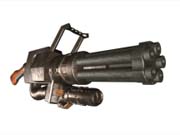
Avenger minigun
Rockwell designed the Avenger as the replacement for its aging CZ53 Personal Minigun. The Avenger's design improvements include improved gel-fin cooling and chromium-plated barrel bores. This gives it a greater range and lethality.
Damage: 7-11
Range: 35
Fire mode/action point cost: Forty-round burst/5 AP
Ammo capacity: 120
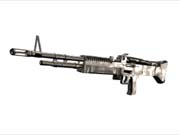
M-60
The M-60 light machine gun saw heavy use among US and Allied forces during the latter half of the 20th Century. It is also a favorite among the postwar crowd.
Damage: 18-26
Range: 35
Fire mode/action point cost: Ten-round burst/5 AP
Ammo capacity: 50

Mace gloves
A veritable gauntlet set with sharp spikes, mace gloves provide that needed punch when things get stuffy.
Damage: 6-10
Range: N/A
Fire mode/action point cost: Punch/3 AP
Ammo capacity: N/A
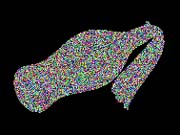
Molotov cocktail
A favorite among the raiders of the Wasteland, molotov cocktails are among the simplest forms of crowd control available to postwar humankind.
Damage: 8-20
Range: 18
Fire mode/action point cost: Throw/4 AP
Ammo capacity: N/A

Pulse grenade
A standard EMP weapon that used to repel all manner of electrical machines without harming biological entities in the process. Uses a timed fuse.
Damage: 100-150
Range: 15
Fire mode/action point cost: Throw/5 AP
Ammo capacity: N/A
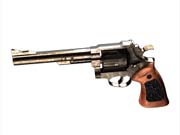
Smith & Wesson M29
Smith & Wesson's classic .44 Magnum revolver still sees much use, despite the fall of civilization.
Damage: 12-18
Range: 15
Fire mode/action point cost: Single/3 AP
Ammo capacity: 6
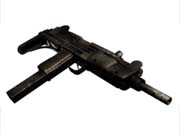
Uzi 9mm
Light, cheap, and deadly, the Uzi 9mm is the weapon of choice for those having to extinguish many lives while keeping in mind the red line.
Damage: 10-20
Range: 20
Fire mode/action point cost: Single/4 AP, Five-round burst/5 AP
Ammo capacity: 25
Q&A with Chris Taylor
Chris Taylor, Fallout Tactics: Brotherhood of Steel's producer at Interplay, took time to show us how the game was coming along and to answer some of our questions about it.
GameSpot: What can you tell us about the game's setting, the postapocalyptic American Midwest?

Chris Taylor: In the other games, we've kind of been told that there's this huge radioactive barrier between [California] and the Midwest, so this is a really unknown piece of territory for the Brotherhood and the players. What we have done is taken and extrapolated our ideas of what the Midwest may look like after a nuclear war. There's a wider variety of terrain, including mountains and snow. There are much larger cities in this game, allowing you to battle amongst giant, multileveled skyscrapers. You're still going to see things very similar to those you've seen in previous Fallout games: ruined cars, burnt-out buildings, and dead trees everywhere. But the game's going to have a bit more of an urban feel to it. The people you'll encounter here are definitely a generation behind in terms of civilization, compared with what you saw in Fallout 2. Everything will be on a larger scale now, though, mostly because we have the technology to create these huge maps. We've concentrated on doing that.
GS: What types of themes will the game's story explore?
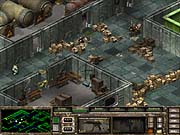
CT: A part of the theme of the game is control; who has control, who's in charge, who has the power, and their power's effects upon people. In the game's case, the Brotherhood of Steel is an organization with control and power. We want to talk about what happens when the power becomes too much, when power becomes that organization's only goal. That leads into what the Enclave [from Fallout 2] is all about. The story focuses on the player, naturally, but there are many elements that are Fallout specific. We tried to clean up the endgame of the first Fallout, provide some back story to the events in Fallout 2, but really, Brotherhood of Steel isn't truly connected to either game. We wanted to maintain lines of separation between each of the games.
GS: Does the game force your character into membership in the Brotherhood of Steel?
CT: Yes, but you can do a lot of things that are not in keeping with the Brotherhood's philosophy. You can kill innocents, for example. But as long as you succeed in your missions, the Brotherhood will allow you to continue working for them, and the game will progress. Your actions will affect your reputation back at the Brotherhood, so if you do lots of bad things, people won't think too highly of you. If you don't care about that, then more power to you. So we still have that "good vs. evil with the majority of people somewhere in between" game path. The only thing you can't do is attack the Brotherhood outright. If you want to end your game really fast, just take out your gun and start shooting people in the Brotherhood bunker. You're allowed to do it, and nothing's going to stop you; but if you do, the game will be over very quickly.
GS: How is the character creation system in Brotherhood of Steel different from the one in the original?
CT: A couple of the old perks and traits are gone, but fundamentally, it's the same [as in Fallout 1 and 2], except when it comes to the new races. The new races have access to race-specific perks and traits, and we've also tweaked the way stats work. A supermutant gets a bonus for strength, for example, while a ghoul gets a negative for strength. But other than that, it's the same old Fallout system.
GS: What role will radiation play in the game?
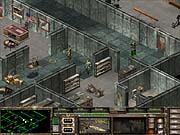
CT: For previous Fallout games, we spent a number of weeks researching radiation and its effects, and that allowed us to actually build a very realistic model. When you took radiation damage, you didn't die immediately. The effects were gradual. The model is based upon the studies that the Department of Defense conducted during World War II. And the game reflected it, but the effects were imperfect; the radiated character would step off the map, and due to the accelerated time, he'd fall over dead. We've tweaked the system a bit for Fallout Brotherhood of Steel.
GS: What about poison? Will it be a larger threat than in previous Fallout games?
CT: We have some different levels of poisons, and we have poisons that do different things. Some poisons do a lot of hit point damage, for example, while others will affect your stats. Still, it's rather unheroic to die from poison, and Fallout games tend to be cinematic in that they sometimes go for that "action movie" feel, so we try to de-emphasize it. We want poison to be a bit of an additional threat, but we by no means want to focus on it.
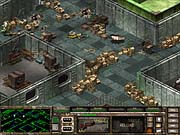
GS: Will there be any skills that let players craft poisons?
CT: No. You can't craft poisons, but you can modify some of your weapons. That will run off the repair skill. But no poisons yet. Maybe next time. Who knows what the future holds?
GS: What types of mission objectives can we expect to encounter in Fallout Brotherhood of Steel?
CT: We've explored a variety of things. Everything from search and destroy and invasions to retrieve/rescue, assassination, and escort missions.
GS: Care to talk about some of your favorite missions?
CT: I wouldn't want to spoil them for anyone. I do have some favorites, though, and they mostly involve picking up new NPCs. The odder the NPC, the more I like it. The missions where you can get some of the odder characters tend to be my favorites, based on that alone.
GS: Will there be any secret or optional missions that the player can engage?
CT: At one point, we were going to include some optional missions. The game was going to be structured so as to allow for optional and required missions, just to make the mission's tree branches seem a little more full. We changed that and instead added more required missions. We changed it because we felt that we were including a lot of content that the players would never encounter. We felt that we wouldn't be able to devote ourselves to designing each mission effectively. Also, we had already implemented random encounters, which really made the special missions obsolete anyway. Some of the random encounters are a little goofy, however, and there is some secret stuff to some of them.
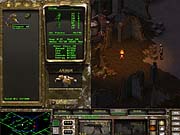
Also, within each mission, you don't have to do everything; as long as you complete the mission's goal, you win, and there are a number of paths you can take. The missions are very open ended, and there will be lots of stuff to do in each one.
GS: So is each mission, in effect, its own mini locality?
CT: Yes. Not all the missions will require you to go in and just kill, but there's obviously a lot of that, since it is a tactical combat game. But most maps will have many people to talk to, and the player also has some choice as to what factions he wants to align himself with. But the game really isn't an RPG, so you can't go in and seduce or blackmail certain characters, for example; many of the RPG-isms aren't there. There are lots of people to barter with and certain items that you can get only in certain areas. So, no, not everyone is there to kill you. But you can kill everyone if you want. That's allowed.
GS: Is Fallout Brotherhood of Steel more linear than the previous Fallout games?
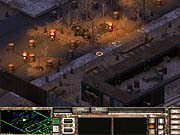
CT: It is more linear than the Fallout RPGs, and that was an intentional decision. We wanted the game to focus on its mission-based aspects.
GS: Will there be any special encounters?
CT: Yes. We have a list of special encounters. And they're based upon the same factors as before: Your luck will determine whether or not you encounter them as you wander around the world. As before, they tend to poke fun at popular culture, and they'll include many movie references. They'll definitely maintain the same feel as those you've seen in other Fallout games; they're "Fallout-isms." It can't be Fallout unless you have the dog and unless you have these cute little references. There won't be as many as there were in Fallout 2, but there will be a good number. And quite a few of them will be very sick and disturbing.
GS: Finally, do you have any words for the many fans of the Fallout series?
CT: I want to thank them all for playing the games, which is the most important thing. Every time I get an e-mail from someone who says they had a great time playing the game, it makes my day. I've never gotten this type of feedback from any other games I've worked on. Thanks much, and keep playing!
Got a news tip or want to contact us directly? Email news@gamespot.com
Join the conversation